The CRKT Razel is a fixed-blade knife inspired by razors and chisels. CRKT (Columbia River Knife and Tool) bridges the gap between designers and users through its products. The company thrives on shared knife goals and forms a knife community for learning, making, growing, playing and connecting with like-minded people.
CRKT Knives
CRKT Knives is a privately owned American knife company established in 1994 and based in Oregon, US. It produces products like tactical knives, pocketknives, and everyday carry (EDC) knives. (Columbia River Knife and Tool (CRKT) produces knives at an affordable price point and collaborates with designers such as Ken Onion( well known for Kershaw Knives), Lucas Burnley, Jesper Voxnaes, and veterans.
CRKT Razel fixed blade Review
The CRKT Razel is based on the original design by Jon Graham – a mechanic-turned knife maker, and manufactured in China. It is a fixed-blade pocketknife with a squared chisel blade that gives it multi-tool qualities. It sports a D2 blade, a resin-infused Micarta fiber handle, a black thermoplastic belt sheath for easy carry, and a lanyard hole for fob.
The knife is 6.75” long with a D2 satin finish plain edge chisel blade extending up to 2.97” with a full tang. The blade thickness is 0.17” and weighs 4.20 ounces.
The Razel is designed as a multipurpose cutting tool for scraping and cutting with excellent edge retention.
Crkt Razel Prices |
||
|---|---|---|
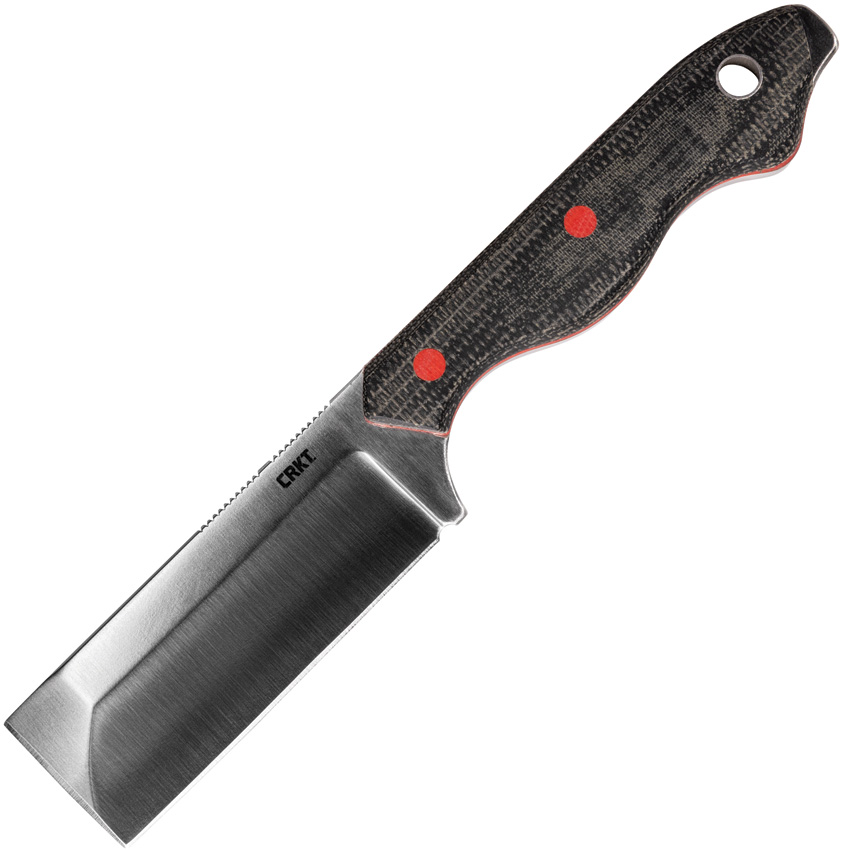 |
 |
Check Price at Blade HQ |
 |
Check Price at Chicago Knife Works | |
Key Specifications of CRKT Review
Unboxing and First Impressions of CRKT Razel
The CRKT Razel came in its simple branded packaging of a green box that said CRKT, with its motto on the rear side of the box. Inside was the instruction manual explaining the specs and the knife itself already wrapped up in a sheath.

It looked small at first impression, but at the same time a beefy and tough knife. The knife’s finishing was amazing. The blade came sharp and shiny right out of the box, and the handle had its new smell. With the full tang blade, the handle also felt quite thick, as it is. Although it looked like it could show wear and tear after some time, but looked impressive once out of the box.
The resin-infused Micarta seems to be a great choice, since it really protected the handle and offered a smooth yet textured grip. The cleaver D2 chisel blade looked like it could do much damage with a single swing! You can also see the hollow grind lines running through the entire length of the blade, with a comfortable sharpening choil and the much-emphasized jimping on the spine.
It is a good addition to the fixed-blade knife, since it also allows you to choke up the knife however you like. The corner edge of the knife is also sharp and pointy despite being thick.
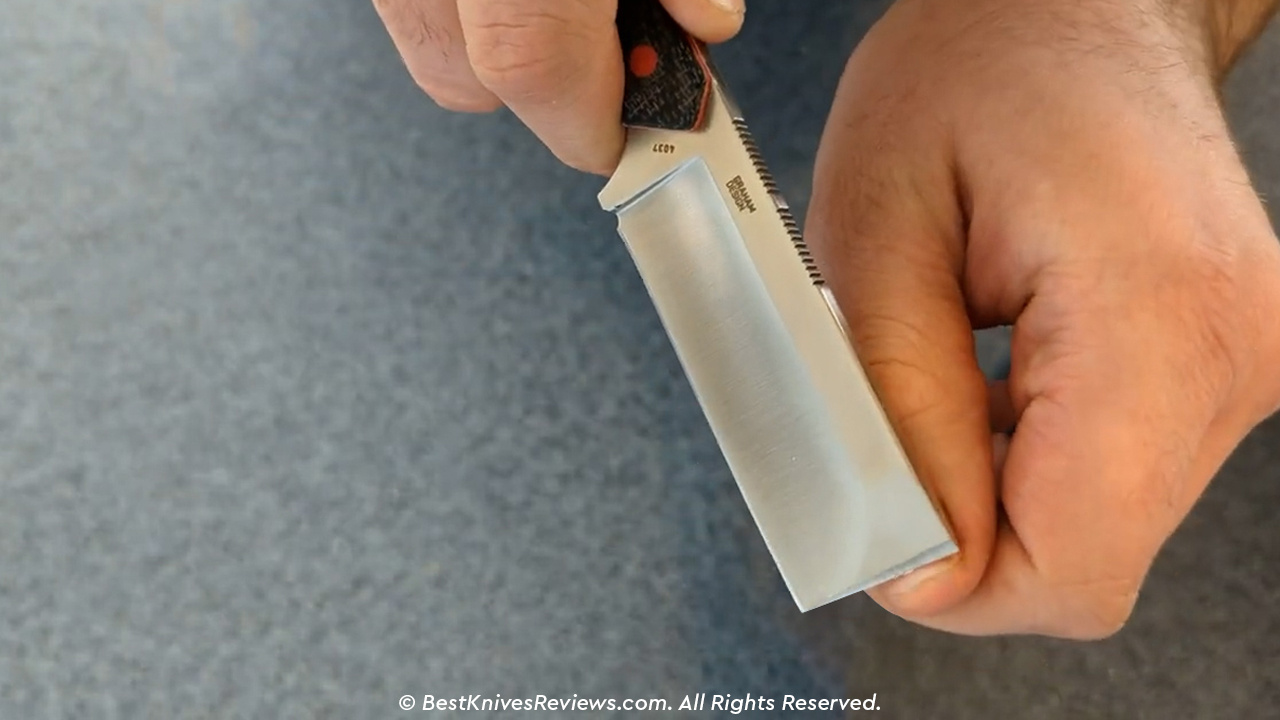
The sheath however, showed the same problem we expected. It required two hands to flip it out. It may not be a deal breaker, but a good sheath should be configured for one-hand ambidextrous carry. Otherwise, the sheath held the knife inside securely, without any pointy edges protruding out or the blade sticking out. The blade also did not come out with a factory edge though.
The Blade of CRKT Razel
Although the blade of the Razel is inspired by razor, it is not exactly razor-blade. Razor blades are incredibly thin – thin enough to shave the hair off of the skin. Their hollow grind with steep convex end abruptly on a thick spine. The Razel’s blade is too thick (0.17”) to be used as a razor, or for a standard pocketknife. It is decently thick for a fixed blade. It gives a robust feeling with enough weight and balance in the hand, unlike the razor blade.
It has a long and flat cutting edge with hollow grind lines, which is perfect for rough slicing.
The 2.97” D2 blade is beefier, with a squared-off chiseled tip and a sturdy spine that lets you hammer the knife into rough material.
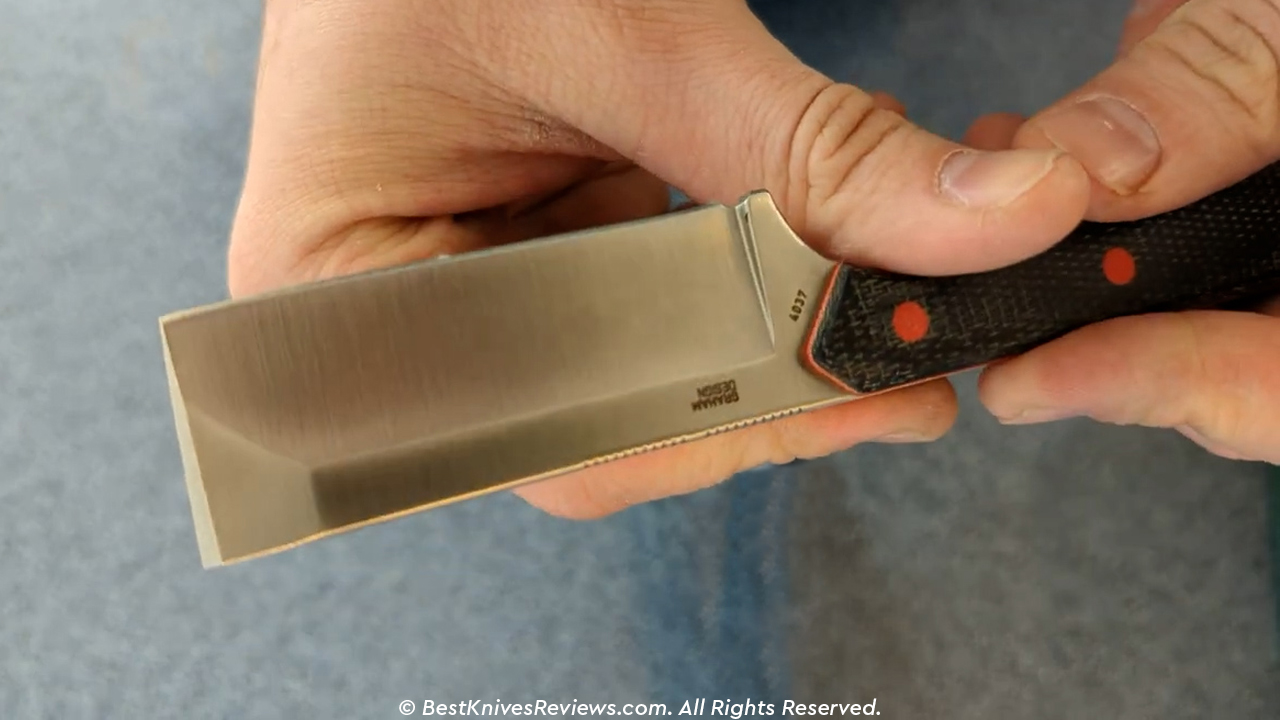
It is a cleaver-style blade intended for rough duty tasks, as opposed to the folding knife’s drop point to spear point blade. This chunky blade is great for chopping and outdoor activities.
Most fixed-blade chisel knives have a single bevel, but the Razel has four. Chisels are great, considering their uniform width all the way to the bevel that turns into a cutting edge. The Razel is thicker near the spine as well with the hollow grind, so the edge has varying degrees of thickness as it approaches the cutting edge. The chisel has a super-thin edge in the sharpened edge of the blade’s corner. Such is the profile on both the sides of the blade, which in effect, acts like a chisel.
So you can say that the chisel is not really a chisel – not that Razel is claiming to be. It is just a second cutting edge, but is highly effective and inspired by a fine chisel. It is more like a combination of a chisel and razor for tougher utilitarian purposes.
The Handle of CRKT Razel Knife
The handle of CRKT Razel appears to be a denim Micarta lined with red spacers. The fabric resides inside the resin and is sanded to a 400 grit finish before a buffing wheel. The handle also features a full tang blade that extends beyond the handle scales and pokes through a small striking surface. It is rounded off so that it is not sharp.
The top of the blade is also rounded off, so you can hold it in any position without it pinching you. It can be used as a hammer, although it does not look like it. There are curves between the blade and the butt that provide a strong grip. Since it is a tough use knife, the knife handle is also such. The blade tang inside is pretty thick, covered by the resin-infused Micarta fiber.
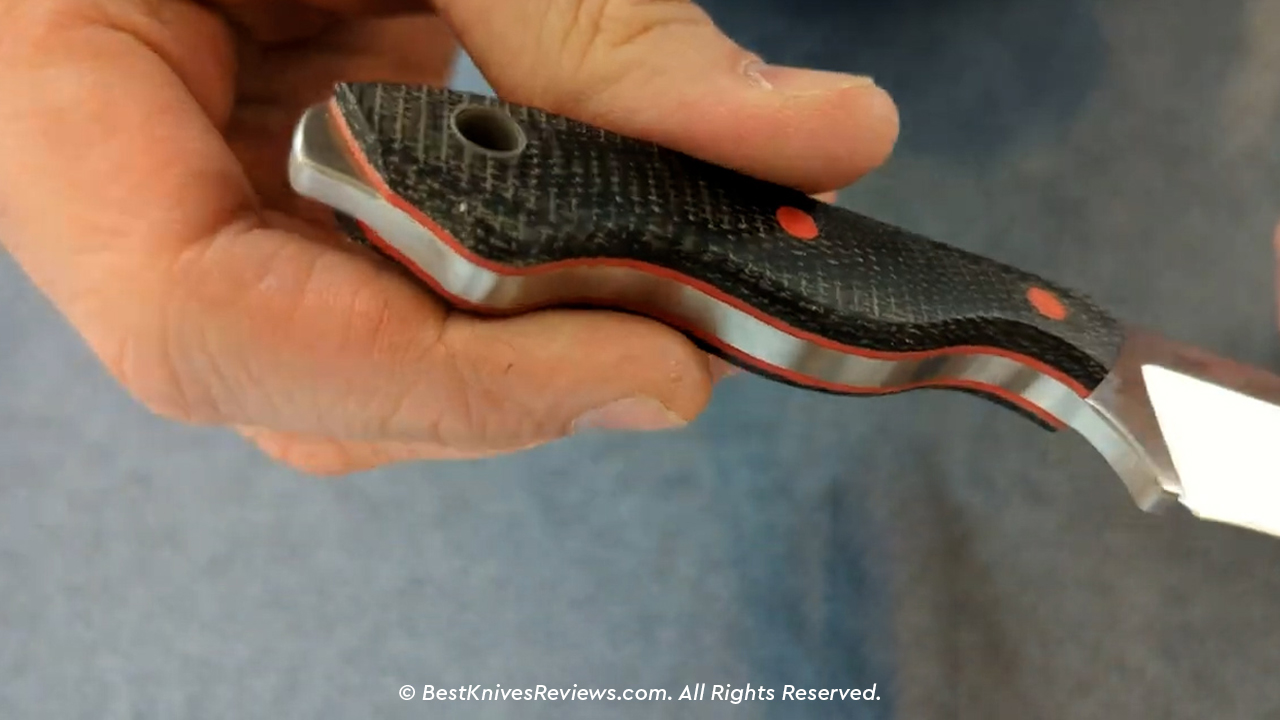
It looks iconic and provides an ergonomic hold, firm yet grippy and comfortable. The edges are very finely contoured, almost as if it is hugging your hand while holding it. However, the 3.78” handle may feel too small for all the knuckles. A standard size should be about 4” that can easily cover all the fingers. It can feel like you are losing grip on the Razel, but the rounded back of the blade helps you grip it well. But the more you use it, the more settled your hand will feel.
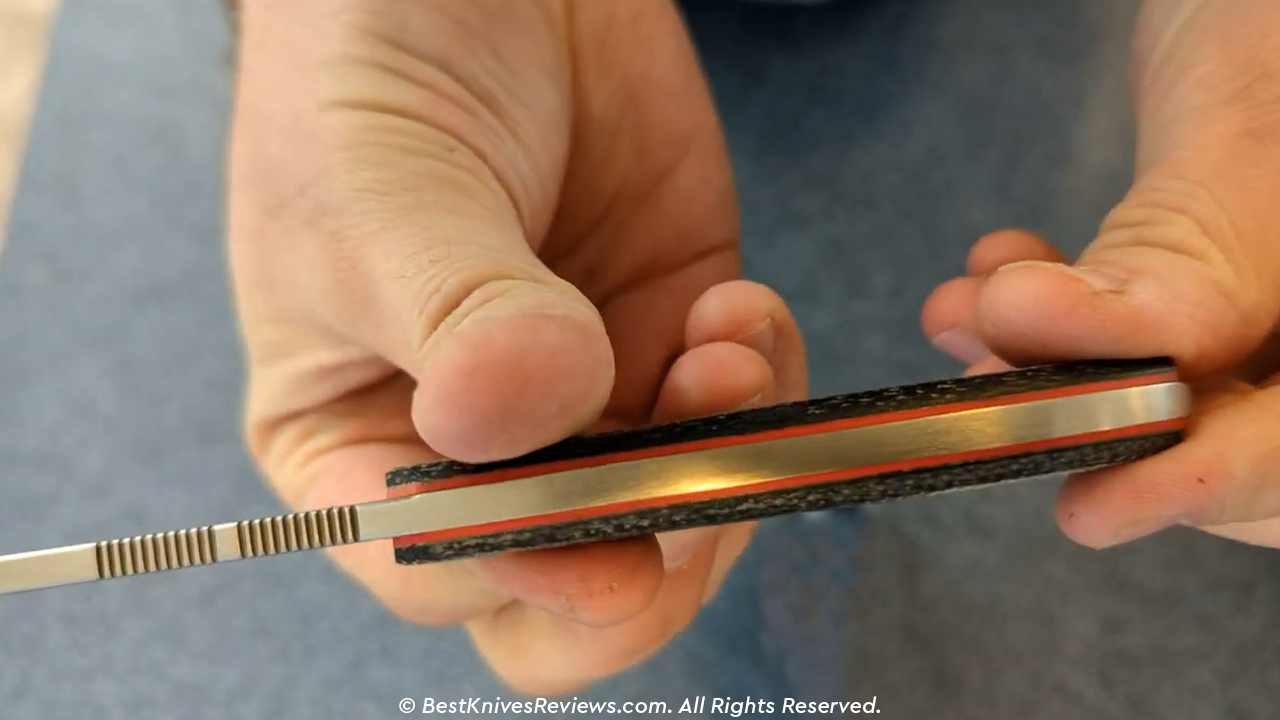
There is also a very clear lanyard hole, large enough for a thick lanyard to pass through it. You can also use it to add to the length of the handle if you have larger hands. The jimping at the top of the blade also assists in a smooth grip.
The Sheath of CRKT Razel
The thermoplastic sheath of the CRKT Razel is rigid and closed around the handle that holds the knife securely in place. Getting the knife in and out is a pretty smooth action.
However, the pocket clip on it is not ideal. It is the kind of clip you would use on a folding knife, but it does not go so well on the sheath. The stainless spring clip does not grab and hold the sheath in the pocket the way you would expect. Even with denim with a wide seam, the sheath pops free from the pocket or the belt as you try to pull out the knife.
The clip bends back toward the sheath with a curve when it comes in contact with the sheath. It releases smoothly, but it does not do the job of a holster that stays in place. It would benefit with a sharp angle though, on an undercut J shape rather than a smooth bump.
However, the clip would hang well on a fit-waist-band, as well as on a narrow belt. It will give it enough room to bit in. Otherwise, you may need two hands to pull out the knife – first pull out the sheath, then the knife.
A tech lock may work well on the sheath, as it does on GITR Expedition Outdoor Survival knife. It also features a Kydex sheath, which works really well on fixed-blade knives. Otherwise, a belt strap would work better rather than a pocket clip.
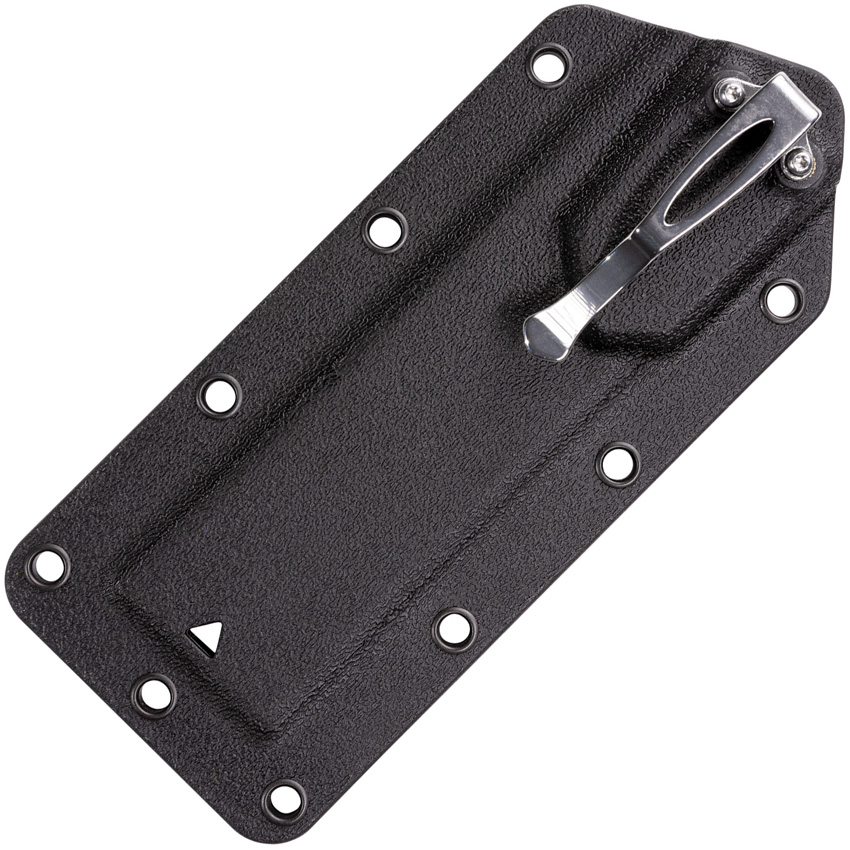
The sheath however, has many holes. You can use it for an aftermarket clip, or to attach a tether to loop around the belt. That would make drawing out the knife a single-handed action as far as the tether goes before the knife pops free.
My Experience with CRKT Razel fixed blade knife
I took advantage of right-out-of-the-box blade and tested it first by slicing paper. It was very smooth and effortless. We also tied up a few sheets of paper together, and it sliced just as well with a single razor action. Also. The advantage of carrying out simple tasks like paper slicing is that you can hold the knife however you want since you are not putting too much pressure on it.
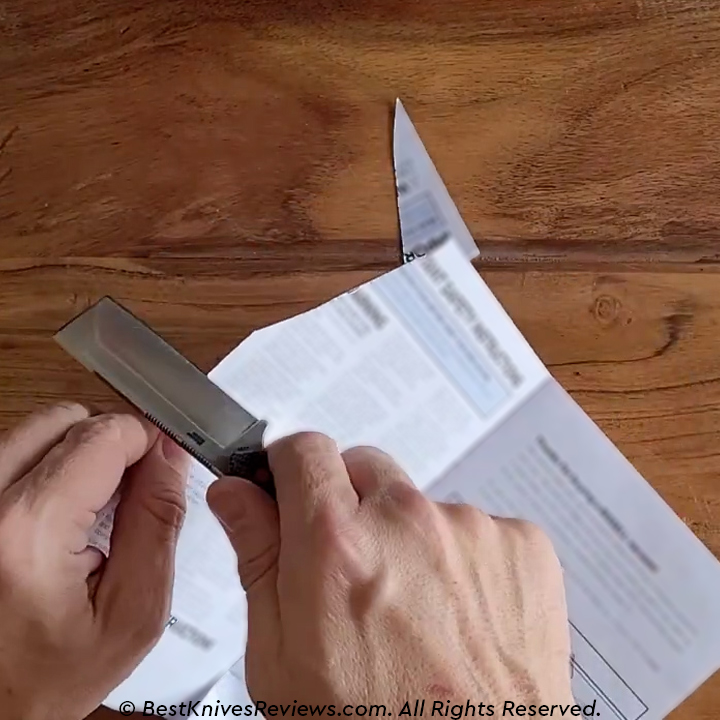
Next, I tried slicing cardboard, and the action was just as smooth. There were no bumps and no stops. The knife worked like it was going through butter.
I also tried testing the chisel on a wood log by thumping it with a hammer. The back of Razel’s handle is an ideal fit for this if you want to carry out tougher tasks with it. It was able to chop off chunks of wooden pieces just by using the chisel. You can also use it to make thin wood chips or chunky slices. It will dig deep enough to chomp out bigger pieces for firewood, for example. That makes the knife practical for outdoor usage.
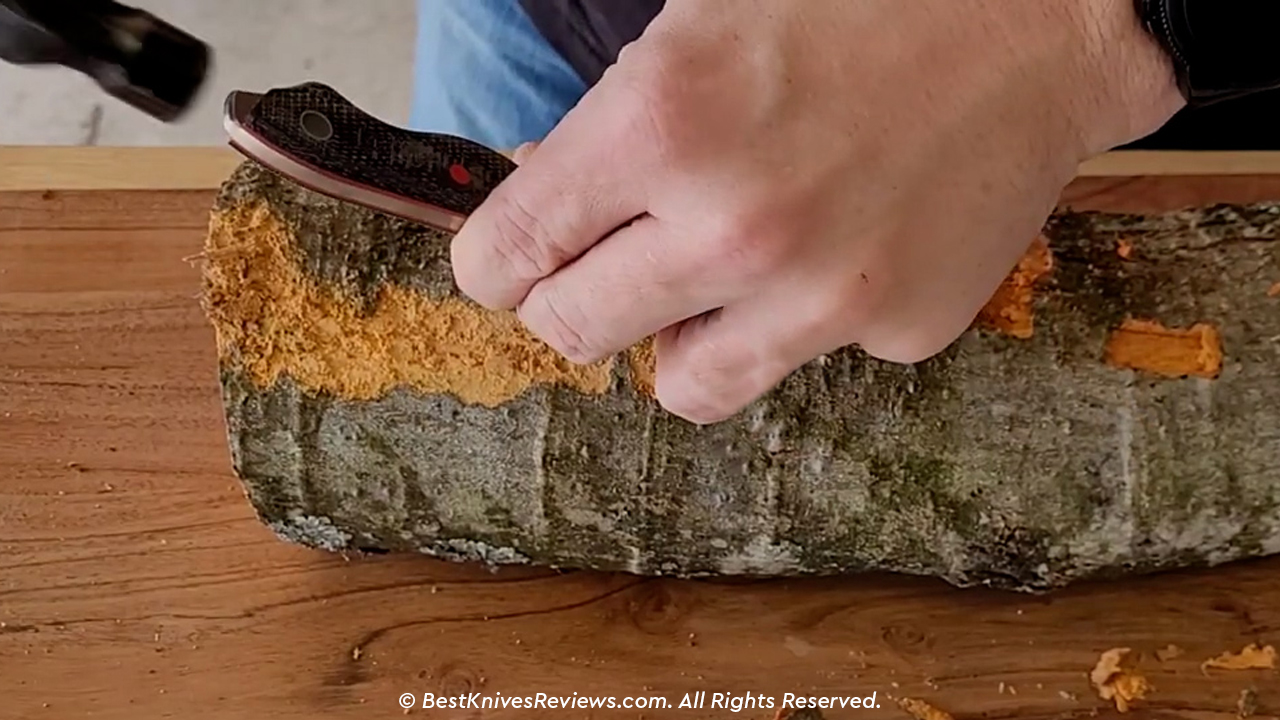
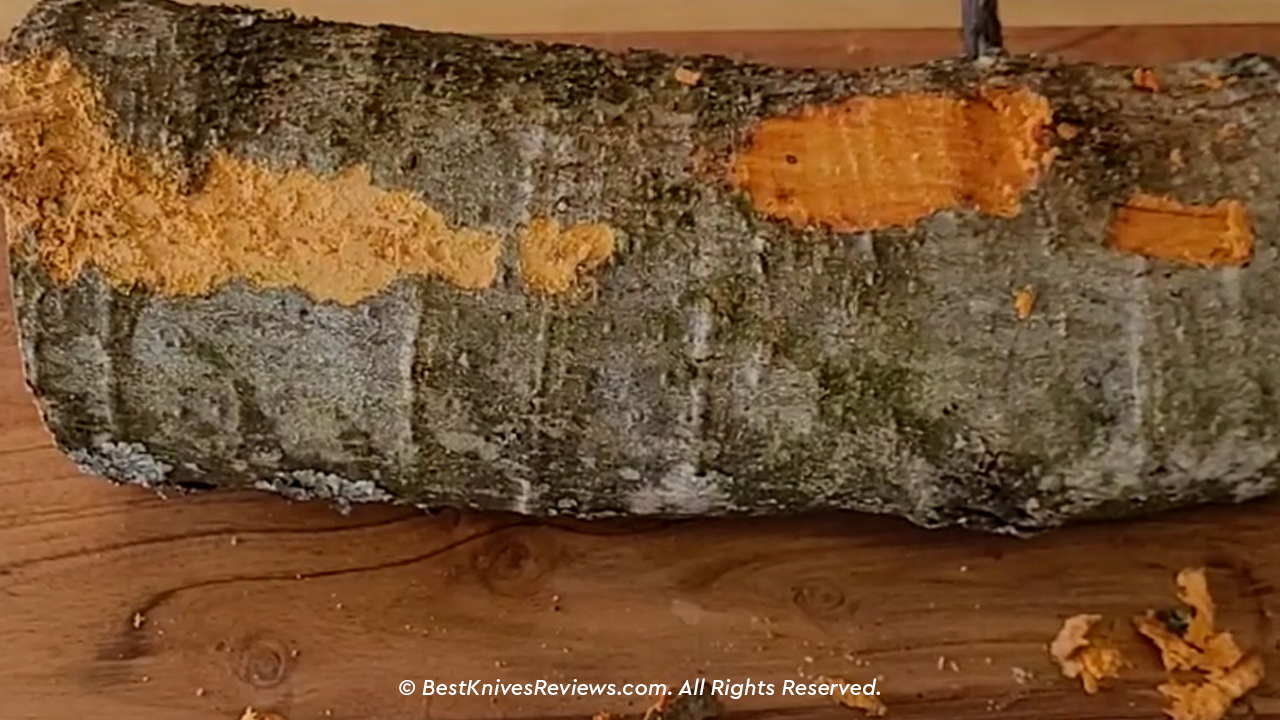
I also used the lanyard hole to attach a lanyard and try to extend the handle’s length. It worked and did not get in the way of thumping it with a hammer or for carrying it inside the sheath. You can also leave it there if you intend to use it again.
However, you do need to clean and maintain the knife before using it for the next time. But insofar, it worked great. We performed the paper cutting, cardboard box cutting and wood cutting jobs all in one go without cleaning it. The blade or the handle did not accumulate much dirt. The knife is able to withstand harsh conditions.
Pros & Cons of CRKT Razel Knife
PRO’s
Con’s
Comparisons
CRKT Razel Fixed-Blade vs CRKT Razel Nax
The Razel Nax is a larger version of the Razel fixed-blade knife. It has a 4.3” full tang blade and weighs heavier at 11.30 oz. It is a hybrid tool that combines a knife, hatchet and chisel into one. It is made of 1075 carbon steel known for its durability and edge retention.
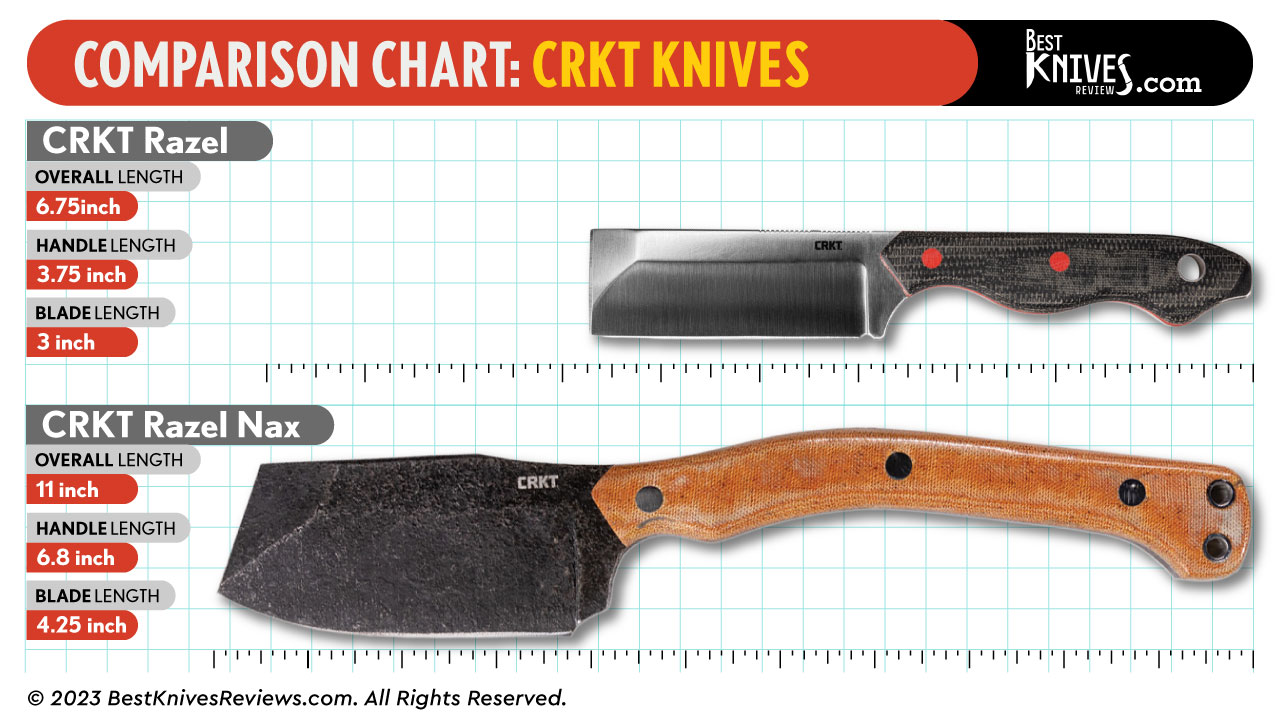
The Razel is smaller and more compact version of the Nax, easier to carry and hold. At the same time, it can carry out heavy EDC tasks. And although the Razel is available in many variants, the Nax is only one of a kind. It looks more like a hammering tool than a knife, also with a chisel blade. It is also capable of brutal tasks and is adaptable to multiple situations. However, the Kydex sheath’s belt loop on the Nax is off. But the Kydex material itself is superior to the thermoplastic on Razel. And unlike Razel, it comes with a flat grind, easy to sharpen and maintain. It can carry on working for an extended period.
CRKT Razel Nax Prices |
||
|---|---|---|
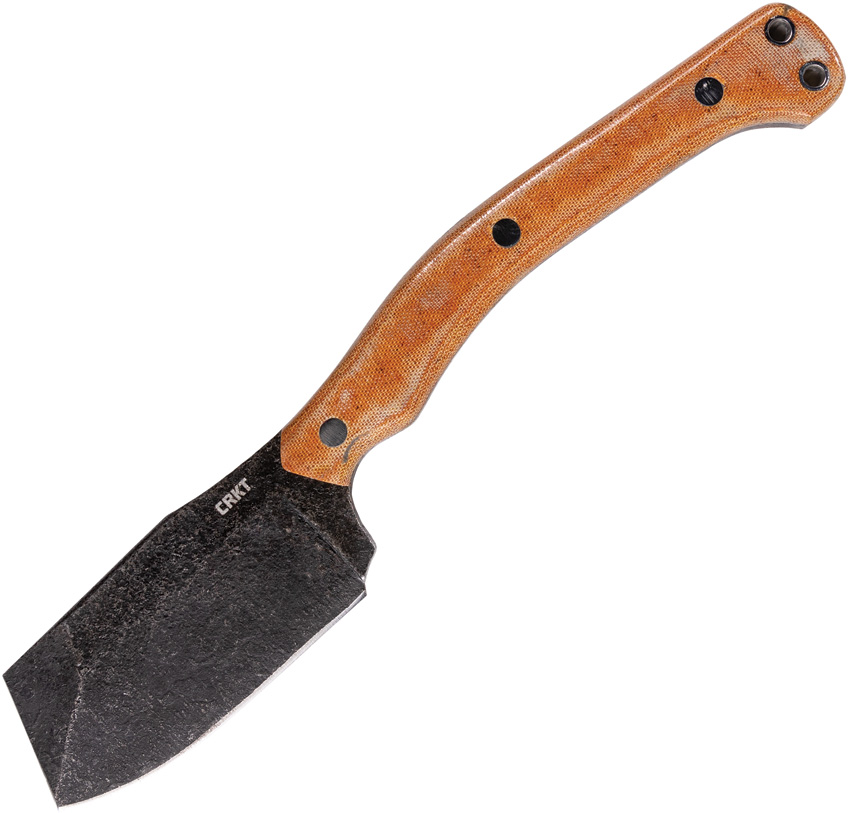 |
 |
Check Price at Blade HQ |
 |
Check Price at Chicago Knife Works | |
Conclusion
We found the CRKT Razel to be an excellent fixed-blade knife. It is compact, easy to carry and able to carry out tough tasks. You can use the chisel in a multitude of ways. The blade’s thickness means it is much more durable and hard. It also comes with a sharpening choil and jimping along the spine, which makes it easier to hold.
The resin-infused Micarta fiber handle is ergonomic, sturdy, well-curved and textured for an ergonomic hold. It also does not accumulate dirt or sweat. However, it can show wear and tear if not maintained regularly.
The thermoplastic sheath works fine, except for the clip. The sheath is likely to come off the pocket belt, making taking the knife out a two-hand job. It could be a negative point or positive depending on how you look at it. But that is not a significant deal breaker for us. You can fasten it on a thin belt for a toothy grip.
When compared to the Razel Nax, it turned out to be smaller and less heavy. It depends on which task you want to conduct when selecting among the two. Both work really well.
